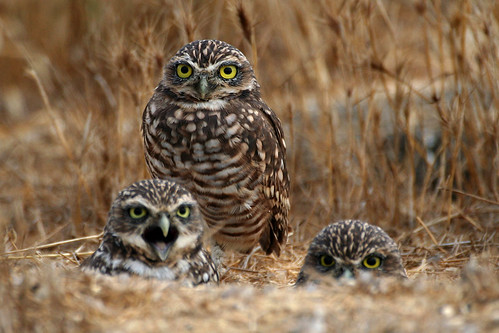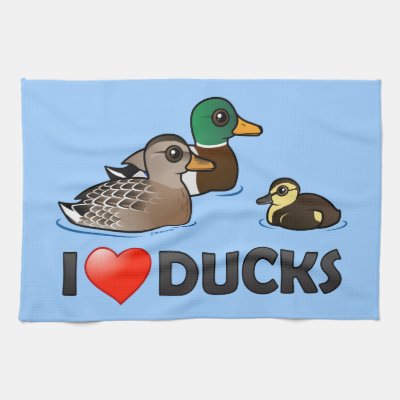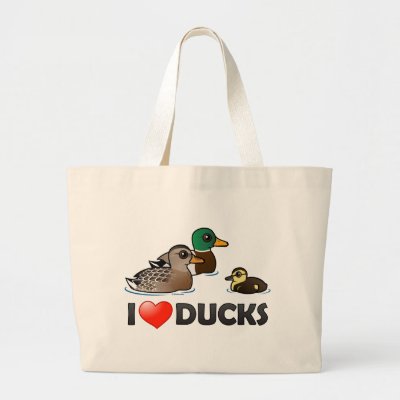This week's highlighted t-shirt is our I Love Ducks design featuring the Birdorable Mallard. Our cute Mallard swims over the phrase I (heart) Ducks on this Women's Fitted T-Shirt. For more designs like this see our Love & Hearts section.
Blog Archive: April 2009
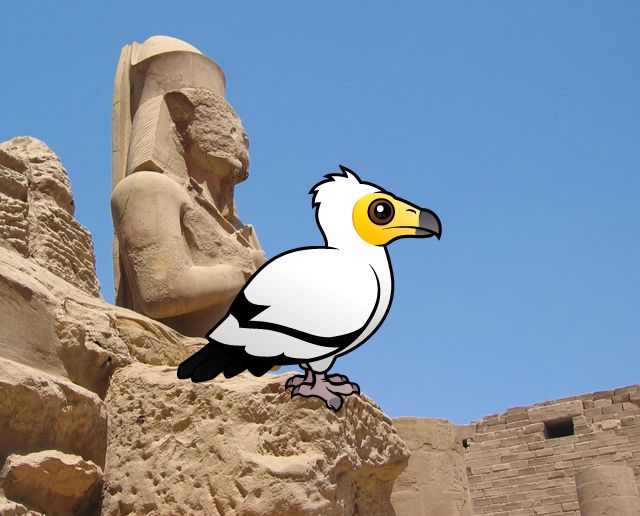
This Earth Day we've added the 175th species to Birdorable: the Egyptian Vulture. This striking black-and-white bird with yellow face lives in southern Europe, northern Africa and southern Asia. Unfortunately, its numbers are in decline over large parts of its range.
In Europe and most of the Middle East it is only half as plentiful as it was about twenty years ago, and the populations in India and southwestern Africa have collapsed almost entirely. 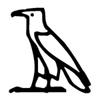 In Egypt this bird is also known as the Pharaoh's Chicken because of its relationship with Ancient Egypt's oldest deity, Nekhbet. They referred to the bird as the Mother of Mothers and it was depicted on the front of the pharaoh's crown.
In Egypt this bird is also known as the Pharaoh's Chicken because of its relationship with Ancient Egypt's oldest deity, Nekhbet. They referred to the bird as the Mother of Mothers and it was depicted on the front of the pharaoh's crown.
The nurturing behavior of these vultures while rearing their young led to a view of them as model parents. We saw these two Egyptian Vultures from a boat on the Chambal River in Rajasthan, India:
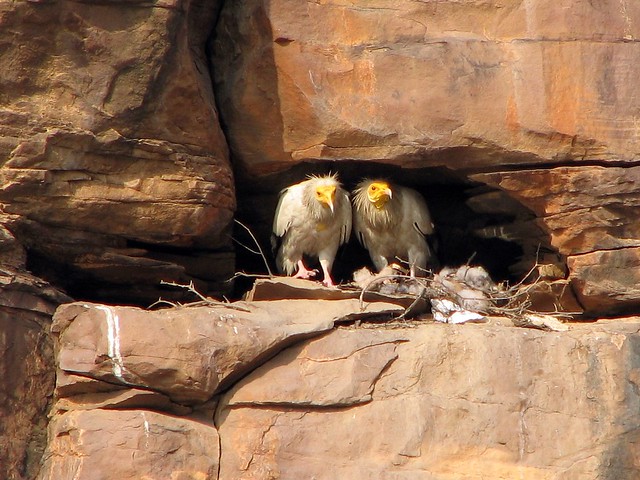
If you like our Egyptian Vulture you may also like our other Birds of Prey. Here are two sample products from our store:
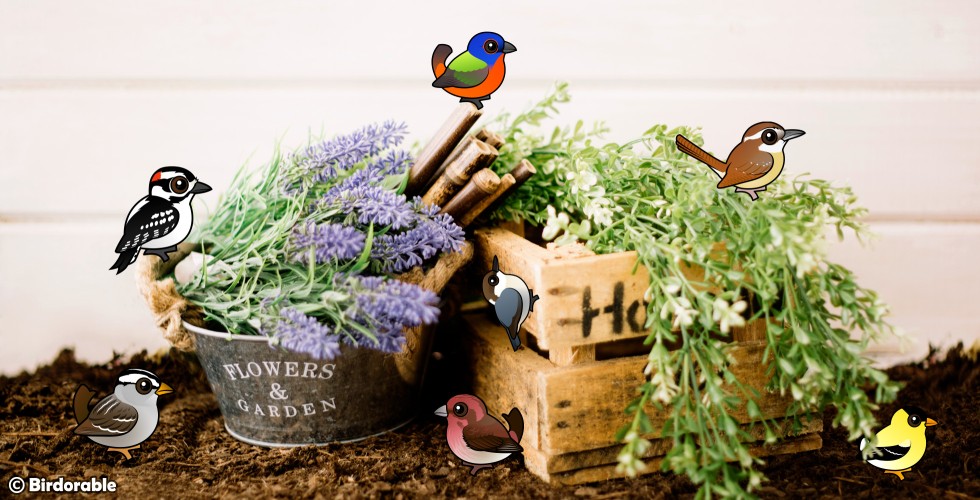
Happy Earth Day to everyone on the planet! Sadly, birds are in trouble. You see pigeons, geese and sparrows everywhere, but those birds have adapted to urban habitats. A great many birds, such as meadowlarks and orioles, require natural habitats. They are in danger from habitat destruction and the ever expanding range of humans. Studies by the National Audubon Society show that over 25 percent of American bird species are in serious decline. Earth Day is a great day to contemplate how you can help save our birds. Here are 10 easy things that you can do around the house to conserve our avian friends:
- Do you have a lawn? Shrink your lawn and go organic. Lawn chemicals kill about 7 million birds each year. Manage your lawn organically and reduce it by 25 percent in favor of plants to provide seeds and a nesting place for birds.
- Keep your cats inside. Estimates for the numbers of birds killed per year by household cats and stray cats in the U.S. range into the hundreds of millions. Cats kill many more birds than wind turbines.
- Wake up to bird-friendly coffee. Coffee grown in the shade of tree canopies, rather than on land cleared of other vegation, provides a habitat for many migratory birds such as warblers, hummingbirds and tanagers.
- Fill your yard with native plants to aid birds that are adapted to eating the seeds and berries of native plants.
- Recycle plastic six-pack rings, plastic bags and aluminum cans. Many birds die on landfills after they get stuck in plastic rings, cut themselves on metal cans or get trapped in plastic bags. By recycling plastic you prevent them from ending up on the landfill and killing innocent birds.
- Eat less meat. The production of beef, pork and poultry meat have a huge impact on the environment due to habitat destruction to provide more farmland for grazing cattle. It requires far more acres to produce the same number of calories of meat than of vegetables and grains. In addition, farms that are overcrowded with animals become hotbeds for diseases like bird flu.
- Leave a good part of your yard natural with bushes and ground cover. The more diverse your yard, the greater variety of birds and small mammals you will attract. Also, keep dead trees in your yard. Hundreds of species of birds and animals live in dead trees and feed on the insects there. Top off, rather than chop down, dead trees.
- Many birds die each year from crashing into windows. More birds are killed each year from striking windows than from any other direct cause of death, and the problem is growing as window sizes increase and houses get larger. Use window decals / stickers or cover your windows with blinds, awnings or shutters to minimize the reflection of the sky.
- Have a bird bath year-round. Birds require bathing to keep their feathers clean and flexible and to maintain healthy plumage. Bird baths also provide a safe place for wild birds to bathe and it is a reliable source of clean drinking water.
- Support your local bird conservation program and forest preserves. Also, educate yourself and your friends and family about birds and the importance of conservation. Go outside and take your family birding.
For more ways on helping birds check out the book 101 Ways to Help Birds (available on Amazon) by Laura Erickson. Happy Earth Day.
Birdorable Earth Day Gifts
Here's a challenge for you! Fill in the name of each Birdorable bird in the puzzle below and a sentence (the answer!) will appear in the pink boxes. Do not enter any spaces or special characters (like apostrophes). If you don't know a bird you can you look it up on the Meet the Birds page.
Tip: Download this puzzle in PDF format so you can print it out!
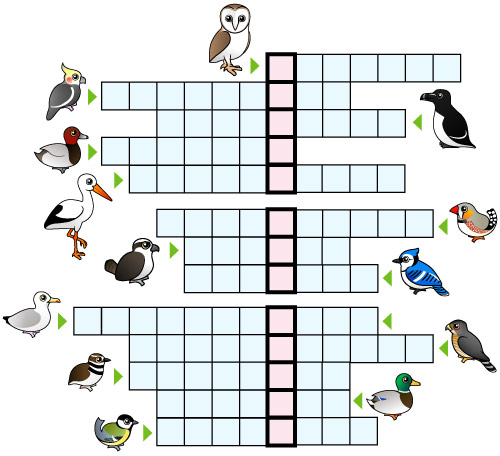
Here are two new Birdorable coloring pages: the Birdorable Blue Jay and Northern Cardinal, two common backyard birds in North America. Go to Coloring Pages to download these two PDFs. You can check our Meet the Birds page to get some color guidance. To see the actual colors of these birds you can visit the corresponding meet pages of the Blue Jay and the Northern Cardinal.
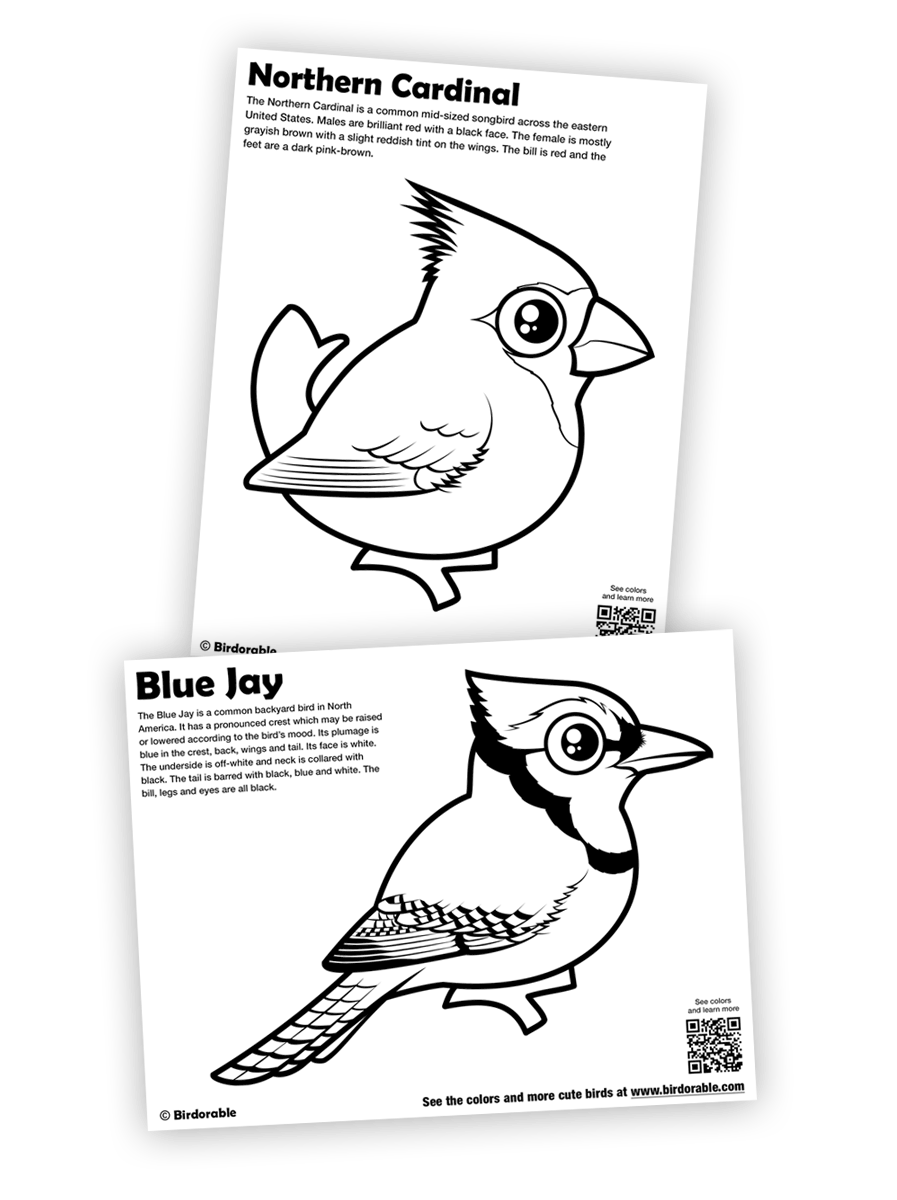
Have you used our coloring pages at home, in your classroom, or at an event? We'd love to hear about it! Send us photos of the pages in action, or the final result - we may showcase them on our blog!
Cute Blue Jay & Cardinal Gifts
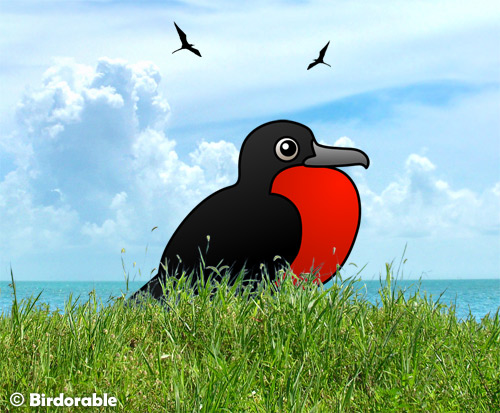
The Magnificent Frigatebird sure lives up to its name; male birds have a magnificent red throat pouch which is inflated like a balloon in the breeding season. This is the only time of the year that they come to land, as they spend the rest of the year out at sea. These frigatebirds are widespread in the tropical Atlantic Ocean, south of Forida and the Carribean. It also breeds along the Pacific coast from Mexico to Ecuador. Although it spends most of its life over the ocean, it almost never lands on the water, taking food items in flight. They alternately climb in thermals, to altitudes as high as 1.5 miles (2500 meters) and then descend to near the water surface before rising up again. The only other bird known to spend days and nights on the wing is the Common Swift, which breeds in Europe and Asia and winters in Africa.
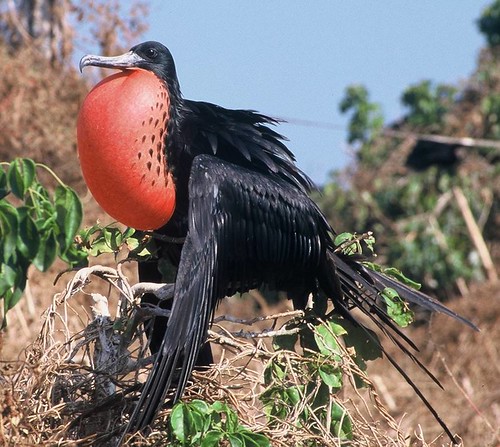
If you like this cute frigatebird you may also like our other Birdorable seabirds.
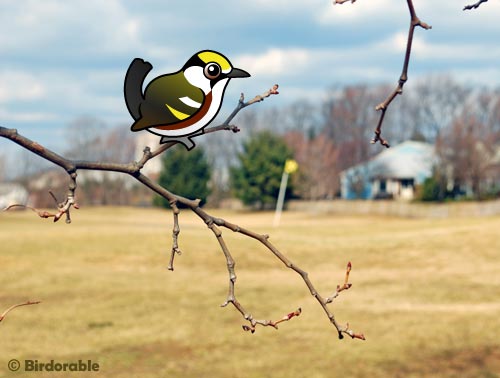
The Chestnut-sided Warbler is a small songbird with a yellow forehead, white breast and chestnut streaks along its sides. They bread in eastern North America and winter in Central America. Each winter they return to the same area where they'll forage with the same flock of resident tropical warblers. What a great way to catch up with old friends! So many birds are decreasing in number these days due to habitat destruction, but this little fellow is actually doing very well. It increased tremendously in the late 19th century as second growth forests became more common.

This is our cute Birdorable version of the Chestnut-sided Warbler, bringing the total number of Birdorable warblers to four. We live in Northern Illinois and most warblers are expected to arrive here through May. Warblers are notoriously difficult to identify because there are so many that look so much alike, and they don't stay still for too long. What's your favorite warbler species?
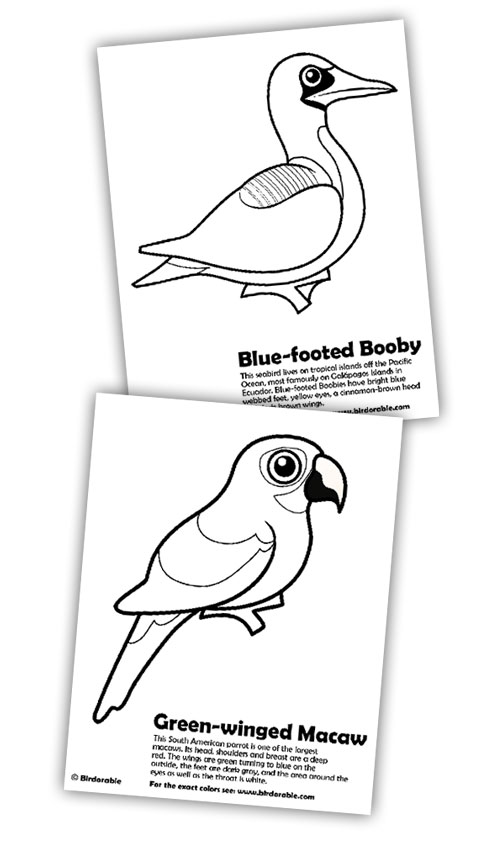
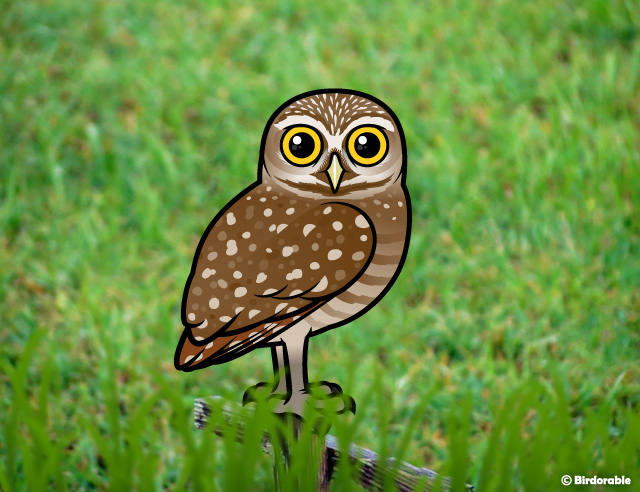
The Burrowing Owl is the second owl that we've added to Birdorable this week. These little cuties are about the size of an American Robin. They like to hang out underground in burrows that were dug out by small mammals like prairie dogs and ground squirrels. Burrowing Owls appear to be diurnal as you can often see them foraging during the day, but they actually hunt all day and night long, although they tend to avoid the mid-day heat. In the United States Burrowing Owls are distributed from the Mississippi west to the Pacific and you can also find them in Florida and the Carribean Islands. They live in dry open areas with low vegetation.
